News Update
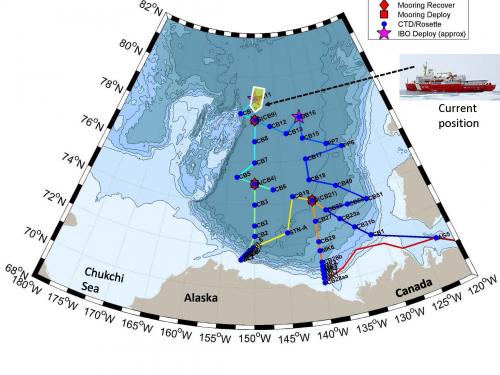
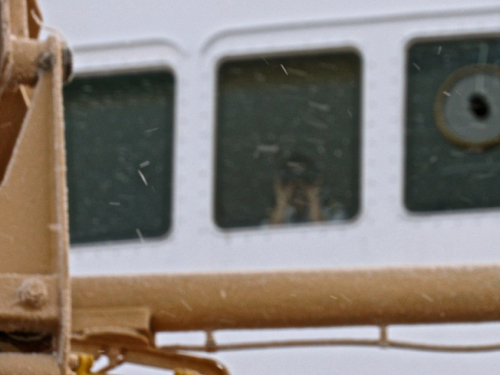
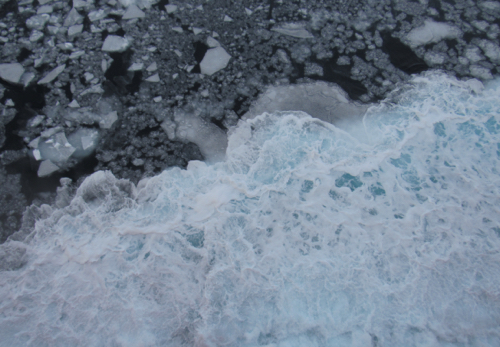
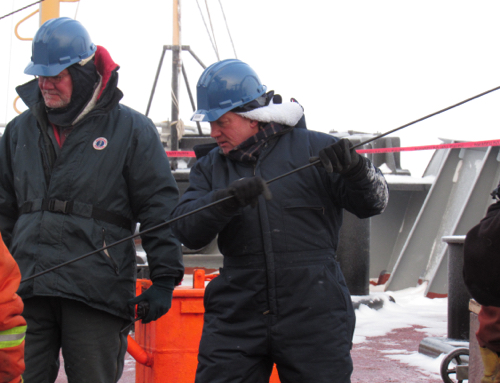
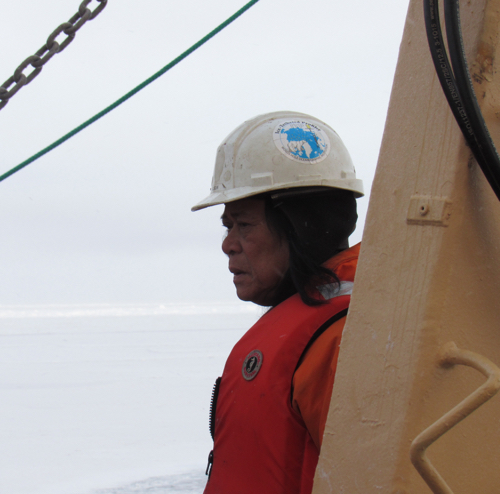
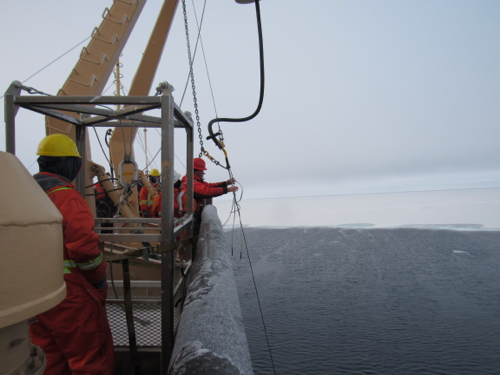
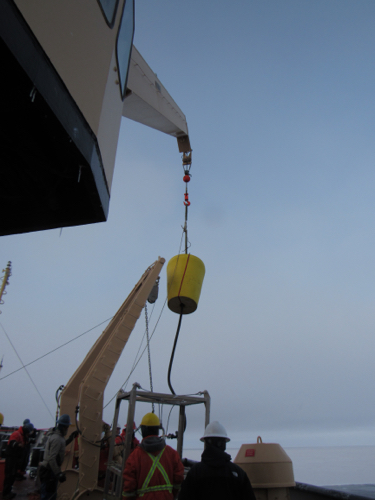
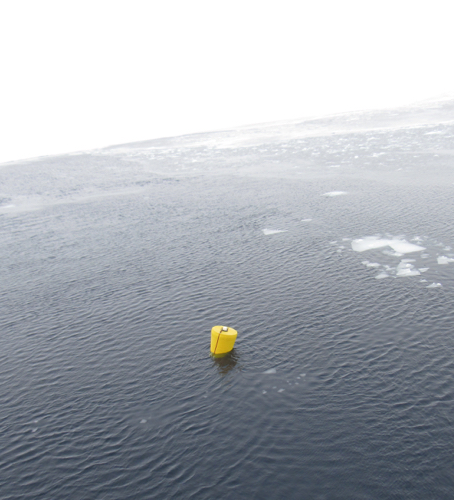
One could and should ask the question, is all the money, time, and energy being put into this research cruise and others like it really worth it? Given that we have instant access to unlimited information from Google, Google Earth etc, are the limited resources best utilized in this manner. I believe the answer is in two words: direct observation. All science is based on asking questions and using experimentation and data to come up with the best explanation we can. Models of systems like the Arctic Ocean or the Beaufort SeaThe Beaufort Sea lies to the north of Alaska and the Yukon and Northwest Territories. can be generated with our incredibly powerful computers, but the data sets for those models needs to be collected through direct observation. Once we have a model we need to know if it actually works so again we rely on direct observation. A good example of that is the Sponge Bobbers that were deployed earlier in the cruise. Their ever-changing positions can be determined through a GPSA Global Positioning System (GPS) is a satellite-based navigation system used to track the location or position of objects on the Earth’s surface. signal. But we had to get them out there in the first place. That is direct observation. Below is some preliminary data from the Sponge Bobbers that were recently deployed.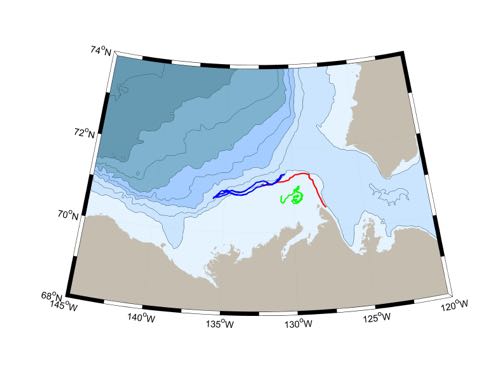
The red line and the blue line represent the Sponge Bobbers that were deployed along a shelf break. The green trace is a set of Sponge Bobbers deployed mid shelf. Shelf breaks are know to have faster currents and mid shelf currents are relatively weak and meandering. The movement of the different sets of Sponge Bobbers tends to confirm this. But tracking these 3 sets of Sponge Bobbers will no doubt give us an idea of how the currents of the Beaufort SeaThe Beaufort Sea lies to the north of Alaska and the Yukon and Northwest Territories. interact with the shelf break currents and mid shelf currents – something that is not well understood.
Chemistry Timeout
Last edition we said that the more acidic a solution, the lower the pH number and the higher the concentration (mol/L) of the H3O+. Since the pH scale is based on powers of ten each move from one pH number to the next represents a ten-fold change in the concentration of H3O+. BUT, the twist is that a 1 unit decrease in pH is a 10 fold increase in H3O+. So pH 0 is 10^0 or 1 mol/L H3O+ concentration. A pH 1 solution is 10^-1 or .1 mol/L which is 1/10 the concentration of the pH 0 solution. When we keep going with this, a pH 2 solution has a H3O+ concentration of 10^-2 mol/L or .01 mol/L and is 1/100 the concentration of the pH 0. So this keeps going. A pH 7 solution (sometimes called the neutral pH) has a H3O+ concentration of 10^-7 mol/L or .0000001 mol/L and is 1/10000000 the concentration of a pH 0 solution. Finally if we go to a pH 14 solution, the numbers just keep getting smaller. The H3O+ of a pH 14 solution is 10^-14 mol/L or .00000000000001 mol/L, really small. So to simplify all this and get rid of all those 0's we chemists use the 0, 1, 2....to represent those various concentration levels. The rule is as the numbers go up, the concentration of H3O+ goes down each by a factor of ten. Next time we'll bring CO2 back into the picture.
Crew Member Focus
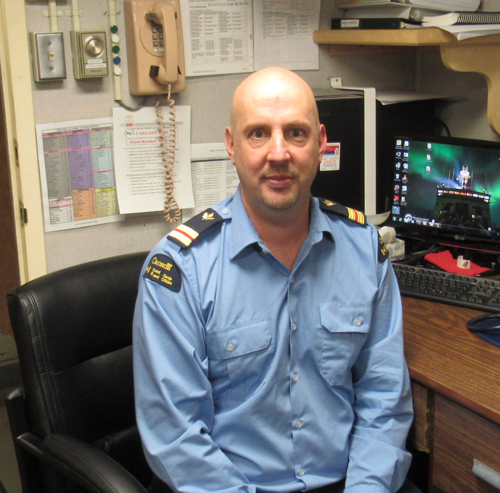
Jean Pierre lives in Drummondville, Quebec with his spouse and two of his three daughters. He comes from a family of nurses and has worked for Health Canada for 22 years mostly in small Native communities. In that position where he is the only medical resource, he essentially does the job of a nurse practitioner. In those villages he has seen and dealt with anything and everything medical. It is that experience that makes him well qualified to work aboard the Louis.
This cruise is Jean Pierre's sixth cruise all of which are six weeks long. In his role as the Medical Officer he is on call 24 hours a day, 7 days a week for any and all medical issues or emergencies. As a bonus he gets to wear the White Officers Shirt on Sundays along with all the other officers aboard.
Some Beaufort GyreA spiral oceanic surface current driven by the wind. science: Freshwater Hydrological Cycle
The fresh water plays an important role in climate stabilization. It evaporates in tropics and as clouds protects ocean from overheating. In polar regions, it freezes and as sea ice protects oceans from overcooling. Driven by atmospheric circulation, the fresh water moves from tropics northward and precipitates over land (Greenland, Northern Canada and Siberia) and over the Arctic Ocean as rain and snow.
Rivers bring this fresh water from land to the ocean too, and then this water is transported back to the tropics by ocean currents to close this very simplified hydrological cycle schematics.
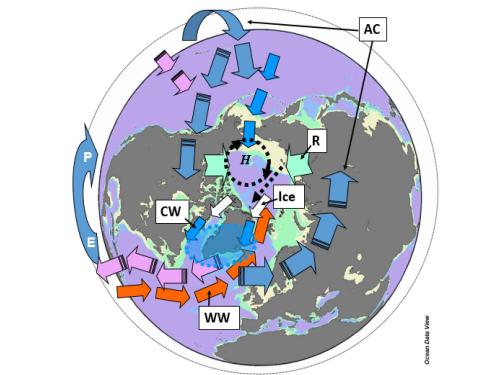
The climate variability with shorter periods of variability (10 to 15 years) are called decadal. They can be regulated by fresh water accumulation and release in the oceans. For the Arctic climate changes at decadal scales, the Beaufort GyreA spiral oceanic surface current driven by the wind. fresh water reservoir plays this role. Some hypothetical mechanisms of decadal climate variability for the Arctic will be discussed in tomorrow's dispatch.
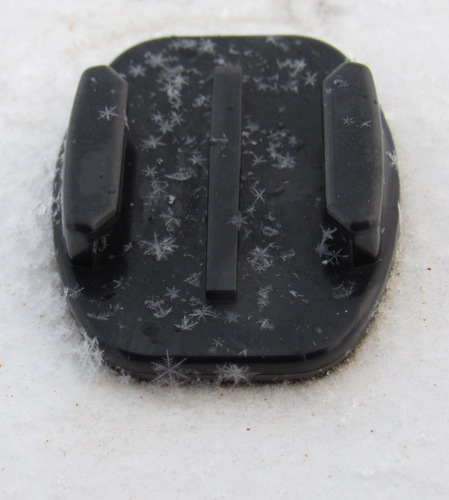


Comments